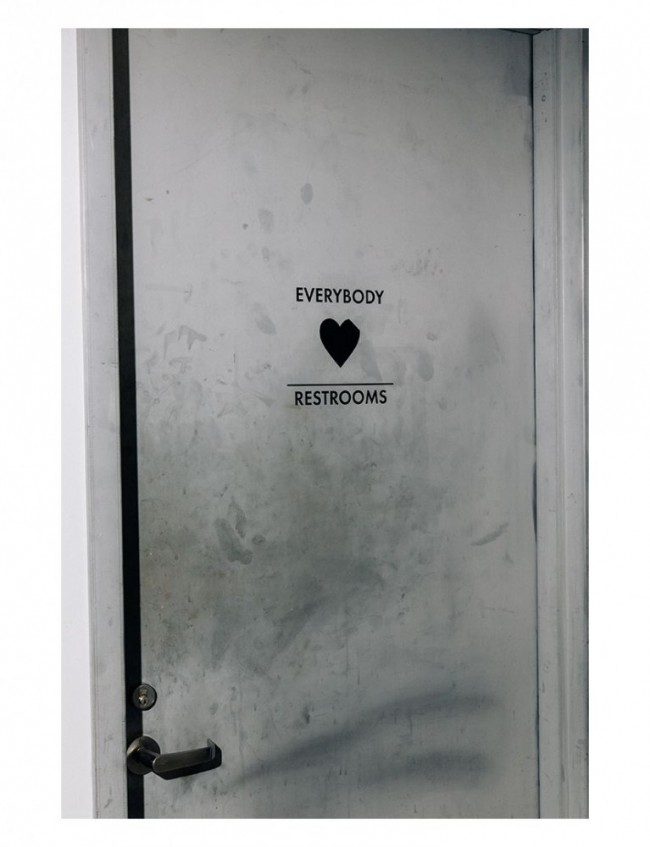INTERVIEW: Artist Sarah Zapata On Ugly Colors AND Fetishizing Yarn
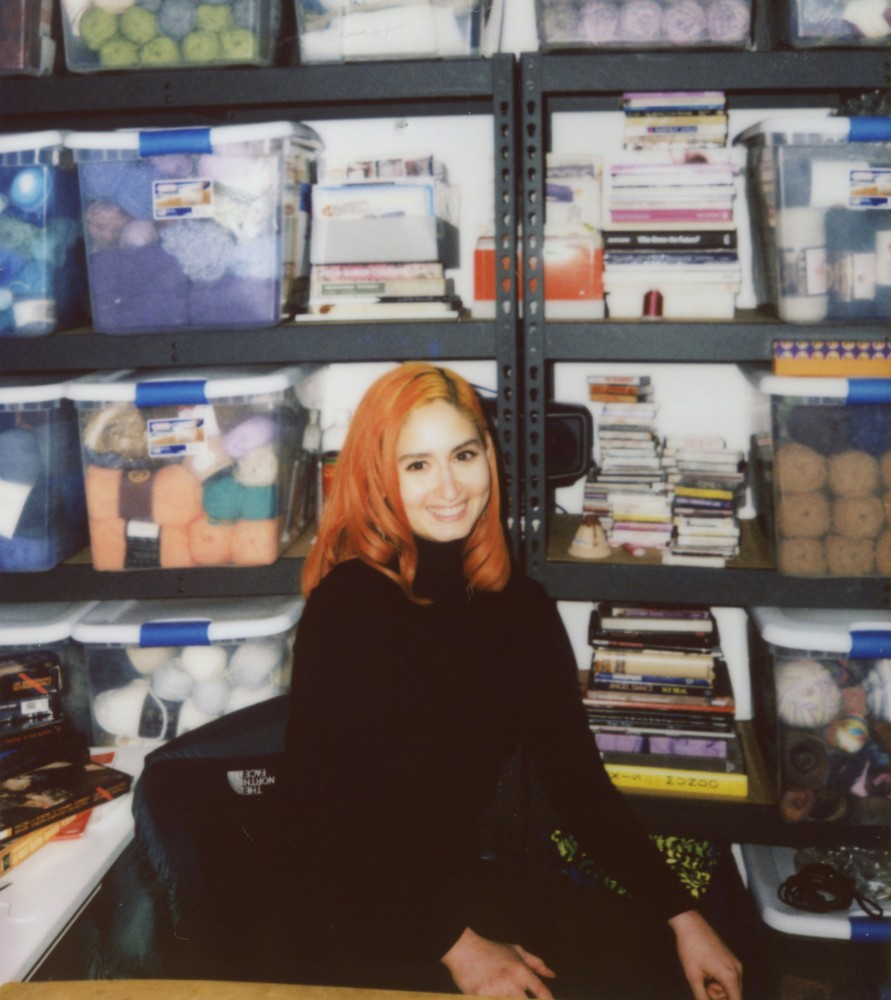
Sarah Zapata in her studio in Gowanus, Brooklyn. Photographed by Dario Castillo for PIN–UP.
Textile artist Sarah Zapata is a statement maker, whether with her multicolored fiber installations or her signature neon orange hair. Zapata’s hand-woven fantasy worlds have been shown at Deli Gallery, Museum of Arts and Design, and El Museo Del Barrio, among others, and she recently concluded her installation, A Famine of Hearing, at Performance Space New York. She now anticipates her forthcoming exhibition at Museo MATE in Lima, a milestone for the Peruvian-American artist. PIN–UP visited Zapata at her Gowanus studio to talk about textiles’ gendered connotations, the capitalist history of Christmas colors, and people’s animalistic interactions with her architectural installations.
Mekala Rajagopal: Let’s start by talking about your inspiration for recent Performance Space installation.
Sarah Zapata: Working with textiles, I’m interested in exploring the Familiar, like capital F, with this material that everyone has a relationship to. Whether it’s through a grandma, mother, or friend, everyone’s encountered yarn and some of these pastimes and techniques associated with it. But that relationship to the material can change depending upon scale or whether it’s being used as an architectural component. I’ve really been thinking about how textiles can direct the body and be activated by them, sometimes with physical touch and other times not, by directing pathways or circular movements through space and and building these literal blockades people have to walk around. Thinking about how color can play into these ideas, red and green are just so foul. That’s what initially attracted me to using them for this installation.
-

Sarah Zapata in her studio in Gowanus, Brooklyn. Photographed by Dario Castillo for PIN–UP.
-
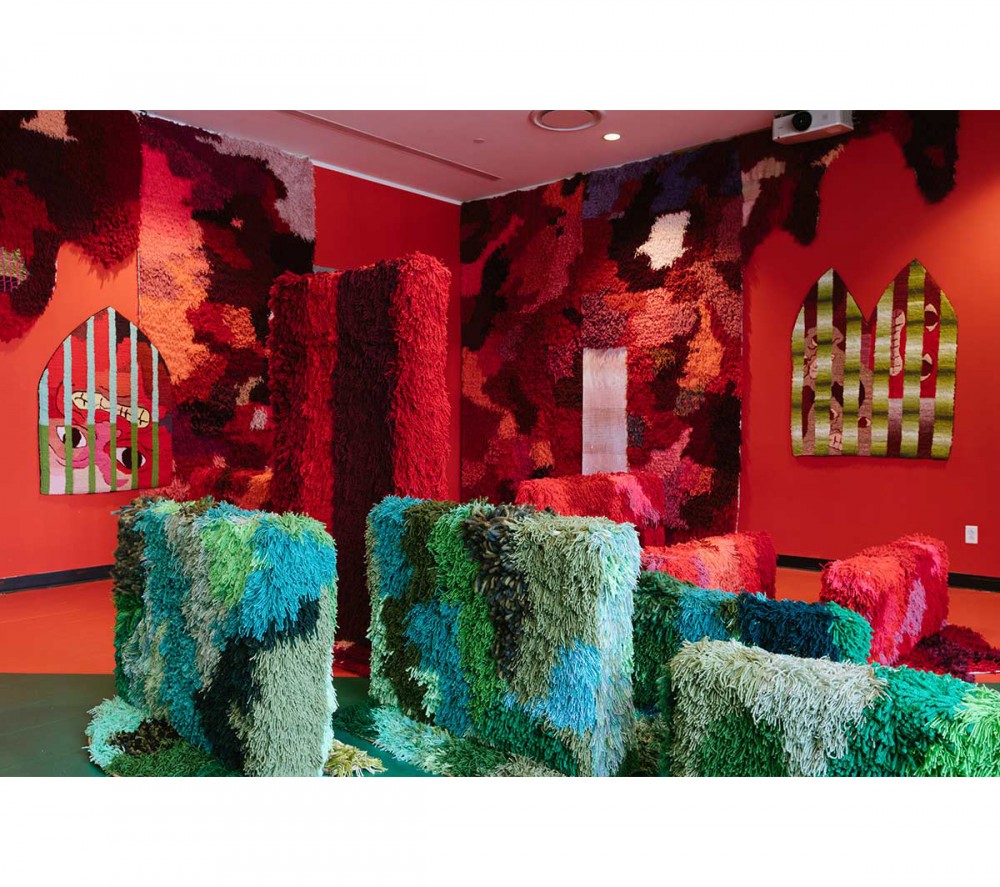
A Famine of Hearing at Performance Space New York, 2019.
Image courtesy Da Ping Luo. -

A Famine of Hearing at Performance Space New York, 2019.
Image courtesy Da Ping Luo. -
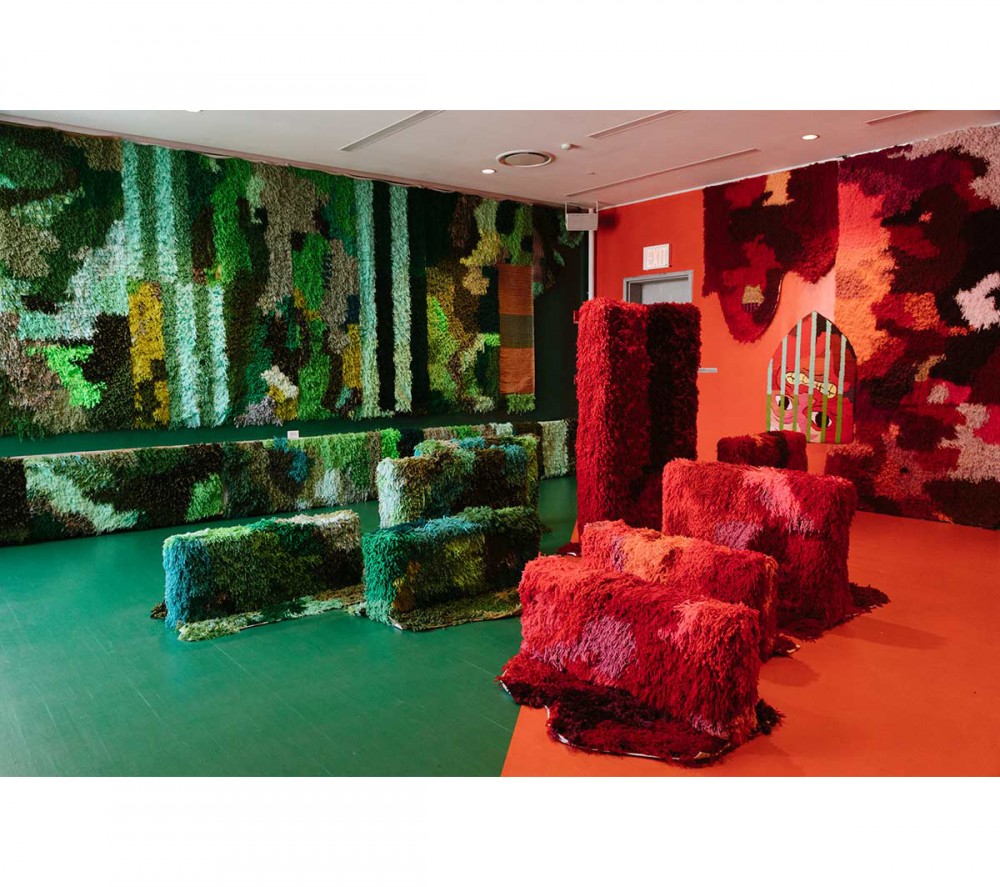
A Famine of Hearing at Performance Space New York, 2019.
Image courtesy Da Ping Luo. -
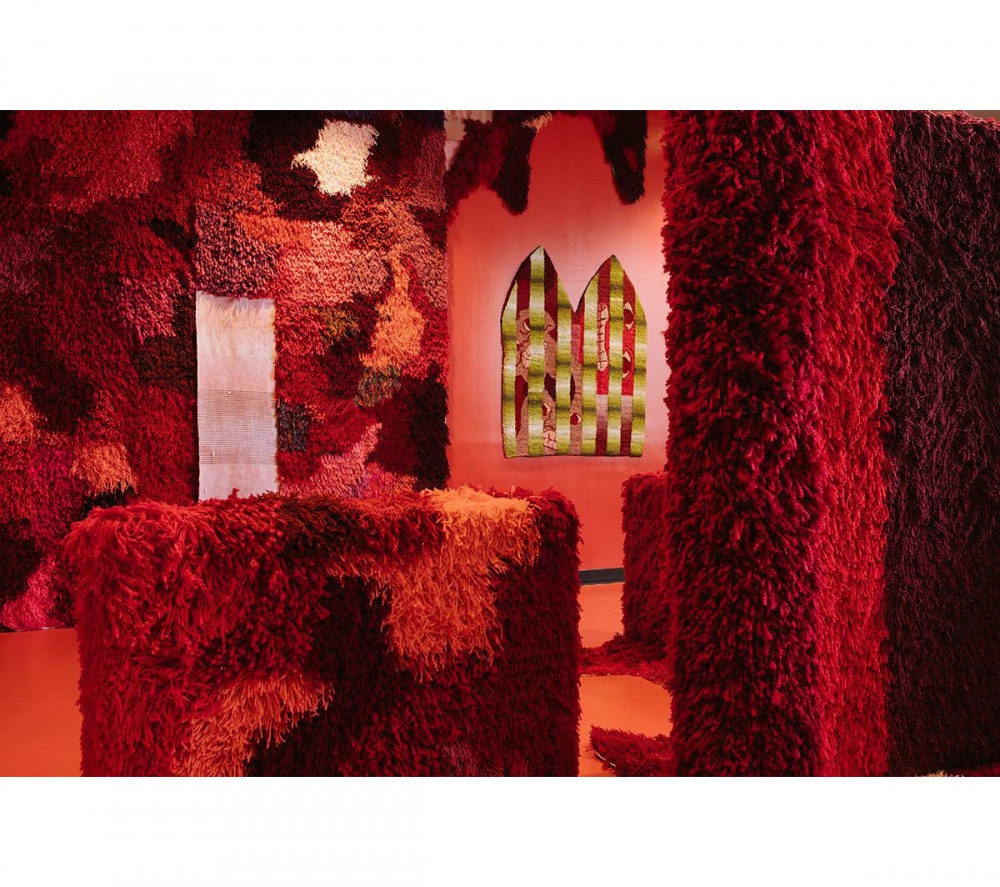
A Famine of Hearing at Performance Space New York, 2019.
Image courtesy Da Ping Luo.
Like brash.
Yeah like so ugly (laughs). There’s actually this really interesting history: the combination of red and green was used in medieval churches to delineate the power structures between worshippers and priests, and it wasn’t until this very particular 1930s Coca Cola ad that red and green were established as the colors of Christmas. That's also where this jolly fat robust Santa comes from, before that it was this very Victorian nasty “we're watching the children” type situation. When I was making it I really thought it was going to be overtly this Christmas explosion but it turned out to be a more natural Garden of Eden kind of space. So I liked this complicated and also very capitalist understanding of these two colors, and working with them also felt like a challenge in a way. I'm attracted to beautiful things but I never want that to be the only takeaway for the viewers.
Since Performance Space is an institution that's committed to performance, I knew this installation was going to be a staging area where people would be waiting before and after performances so I wanted to create pieces people could actually sit on. You were only supposed to touch the seat pieces, but everyone always touches everything, which I'm into but I’m also like, “Ugh! People are animals.”
The phrase “body of work” is interesting in the context of whether you're allowing people to touch the body or not, especially with its connection to womanhood.
That's what I love about these materials, it's impossible to divorce them from the body. I'm originally from Texas and when I moved to New York in 2011 after college I was dealing with a lot of guilt and shame digesting my life, so I started writing foot erotica as a way to really deal with it and turn it into this empowering fantasy. I started making rugs as a way for me to relate to the body but be in control of exactly how I did so.
-
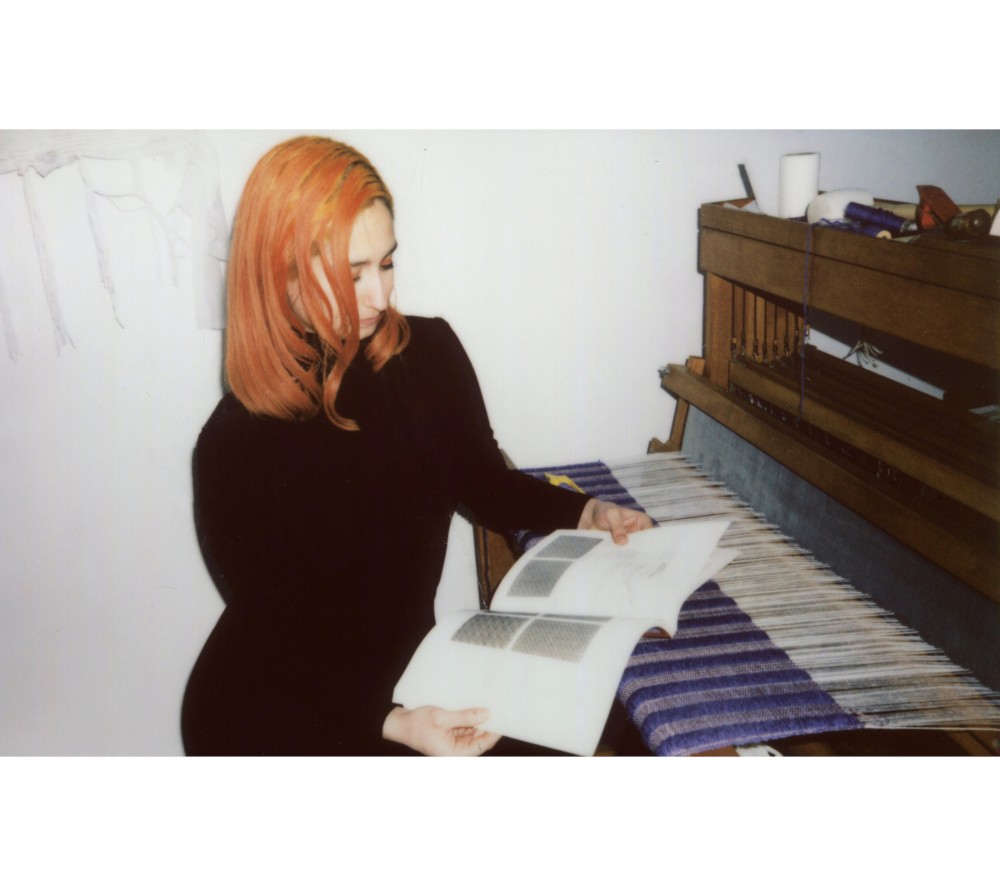
Sarah Zapata in her studio in Gowanus, Brooklyn. Photographed by Dario Castillo for PIN–UP.
-
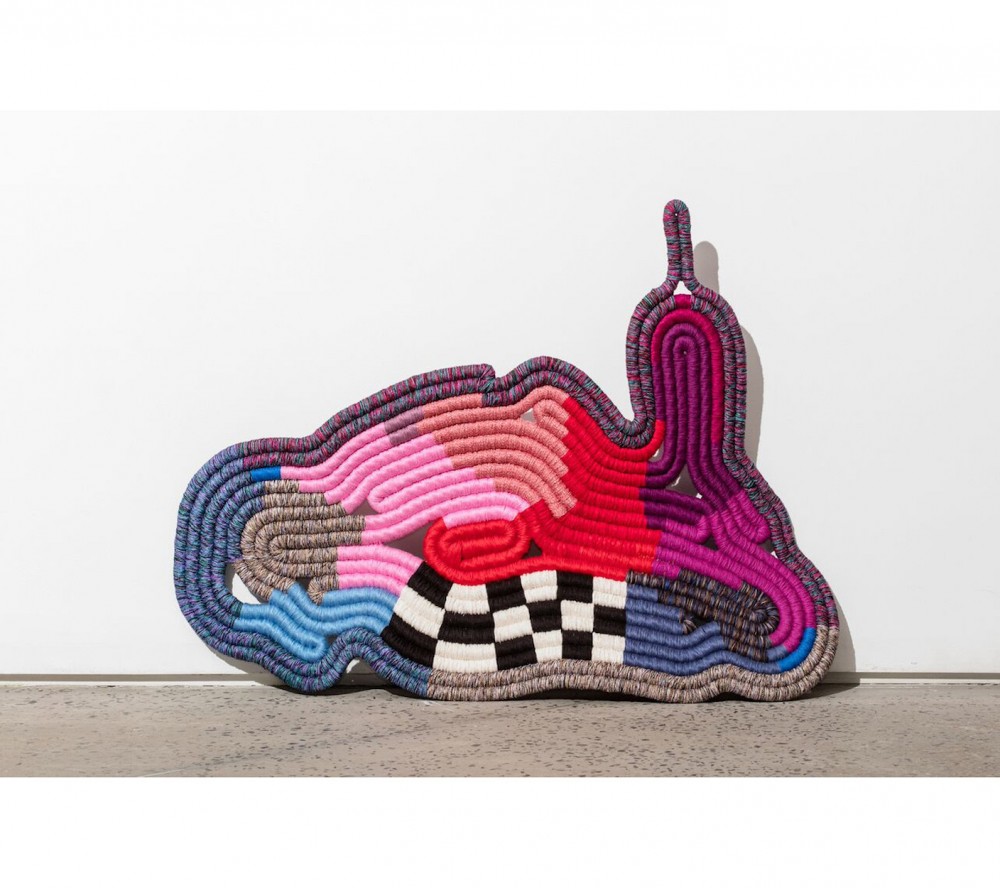
Character of Color Phenomena, Rug, 2017.
As part of Room With Its Own Rules at Chamber.
Image courtesy David Brandon Geeting. -
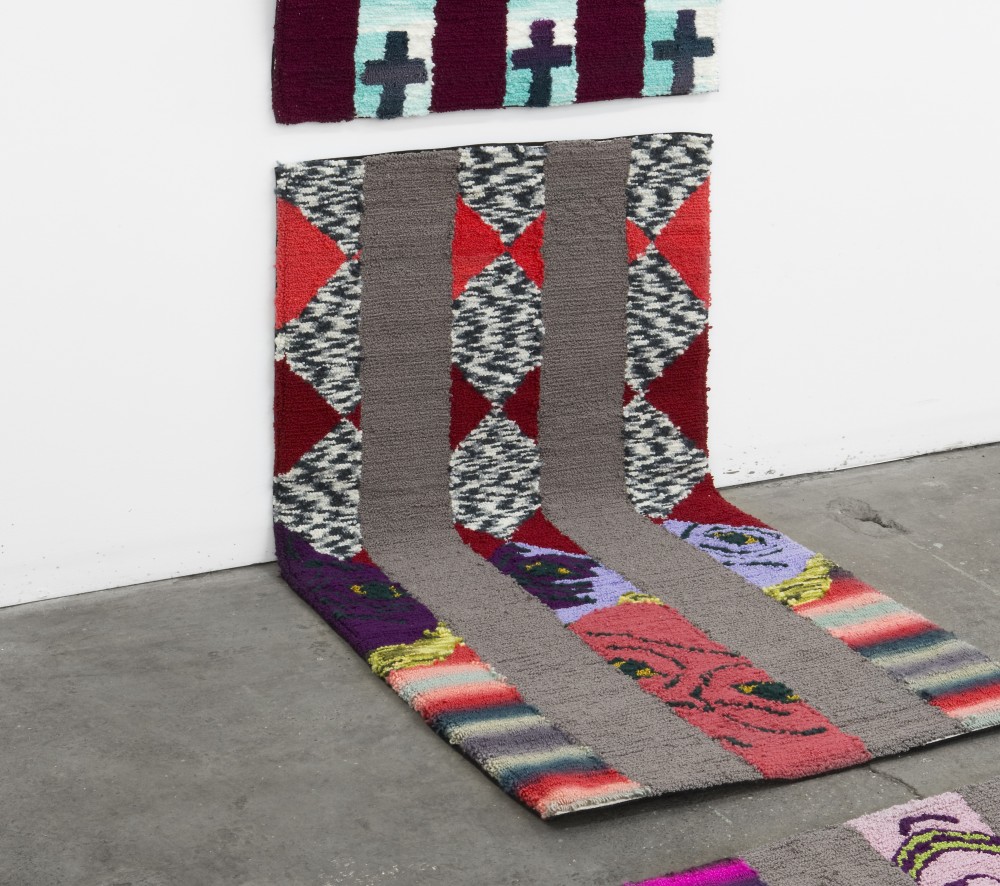
-

Can you talk about some of the patterns and figures that have shown up on some of your most recent work?
Stripes have become something I’m really interested in using because they have a very contentious history: there are biblical texts that talk about how one should not wear a fabric that's made of two, so from the medieval period onward stripes were used to delineate people who were on the fringe of society, like jesters and prostitutes. That's actually where the jail stripe comes from as well as the American flag. It's sort of been a way for me to access this untrustworthiness within a specific cloth as well as exalting those who are on the fringes of society. I guess all of these things are very interested in tradition and how they can relate to untraditional situations, or to me as an untraditional person, with that sort of juxtaposition of materials and experience.
There are also these more representational tufted pieces with figurative faces on them. I was thinking about stained glass church windows that depict these very beautiful quaint narratives when there’s actually so much more darkness that exists within the bible and within organized religion. The faces depict different pieces from this pre-Columbian civilization, the Moche, in these trophy heads and ceramics. I wanted an almost anti-gender figure from an anti-hero society.
Are you exploring these same themes of deviance and morality in your next show?
Absolutely. The work is very personal but it’s also about what my experience says about society at large, so that's why I’m always stepping back and looking at the confines that exist historically within textiles. We've always had the need to clothe ourselves and ancient people were so intentional with it. I’m very interested in investigating deviance and morality within these things.
-

Sarah Zapata in her studio in Gowanus, Brooklyn. Photographed by Dario Castillo for PIN–UP.
-

Sarah Zapata in her studio in Gowanus, Brooklyn. Photographed by Dario Castillo for PIN–UP.
What would be like your dream installation space?
I really like going bigger and bigger, so I think a space where I can use all of the surfaces around it, like I haven't used the ceiling yet!. I like the idea of expanding until I’m using every part of the space. Still, I like using the floor so much. It seems like such a forgotten part of a work sometimes and it also feels really humble and exciting to make people look down rather than being comfortable at their eye level.
Have you experimented with other mediums?
I usually use yarn, but at the beginning of the year I had a solo show with Deli Gallery where I showed ceramics that were meant to look like textiles. Sewing rope on top of itself is called coiling, and there's a ceramic technique that looks the same, also called coiling, that I used to make these other sculptures. The show in Peru is going to have ceramics as well. I'm really interested in fetishizing yarn and using it to all its capacity, but I’m interested in exploring additions.
Do you think your work has a gender?
I've actually thought about that a lot. I feel like it’s so female that it becomes something else in this weird way, it’s almost alien. I like that it’s meant to sort of be in the past and the future, like an imagined sense of time, so maybe it has an imagined gender. But it’s very important to me that it’s carrying on this very feminine tradition as a way for me to really understand my relationship to my culture. I want to celebrate that and challenge it at the same time.
-
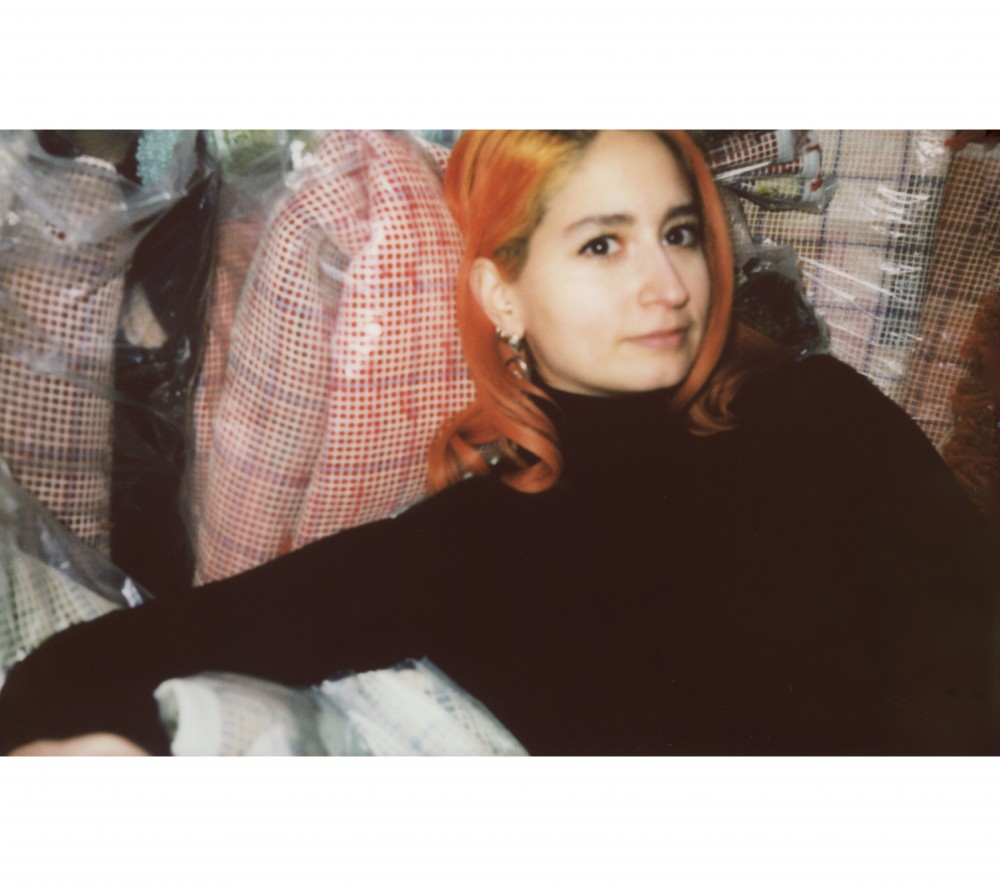
Sarah Zapata in her studio in Gowanus, Brooklyn. Photographed by Dario Castillo for PIN–UP.
-
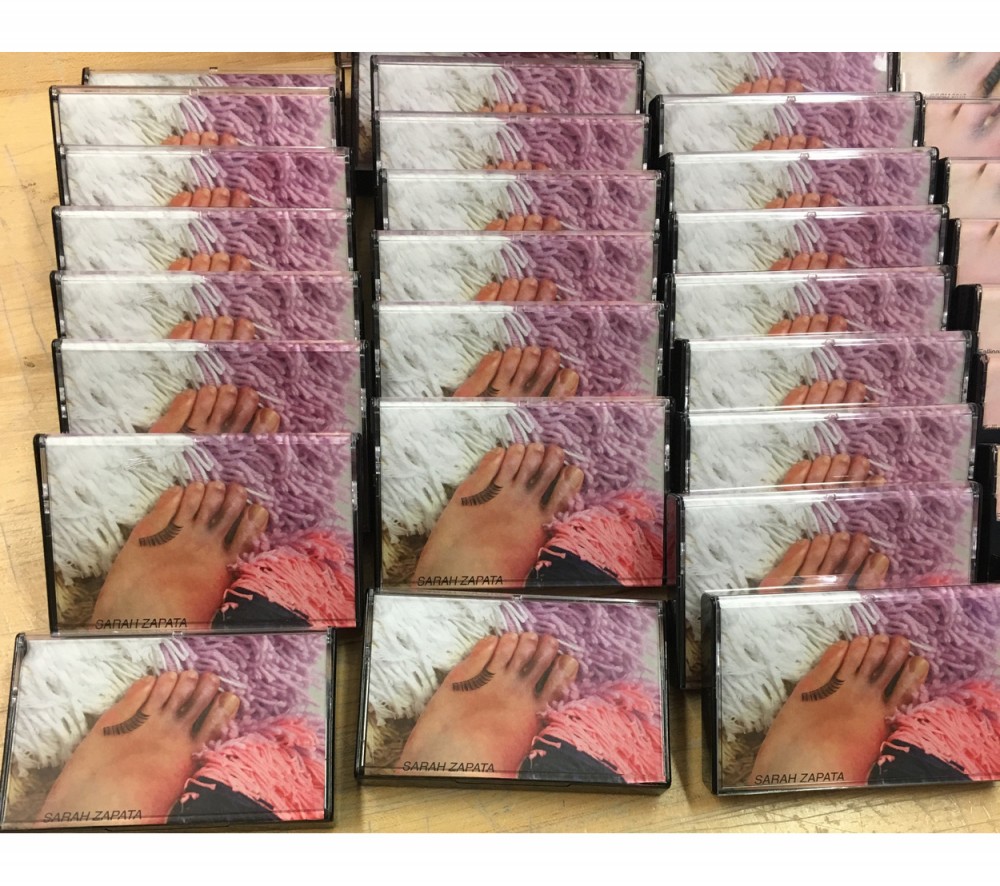
Losing Your Foothold, 2016.
A recorded essay commissioned by Monica Mirable for Falling In. -

A collaboration with likemindedobjects for their Artist Loungers series, 2017.
Image courtesy Cooler Gallery/Sarah Drexler.
Did your relationship with these techniques start from family?
Sewing and stuff like that I learned from my grandmother, but weaving I learned when I was in college studying fibers and textiles. I have done some tapestry courses in Peru before, and my grandfather was a textile salesman in Piura, where my family is from, so it feels like this weird continuation almost.
Do you go back to Peru a lot?
I try and go back every year. I took my girlfriend for the first time in 2019 and she didn't get sick which is great. But that's also why I’m so excited for this show in Peru, it feels like a culmination of a lot of things that I've dreamed of.
Text by Mekala Rajagopal.
Portraits by Dario Castillo for PIN–UP.
All other images courtesy of the artist.

